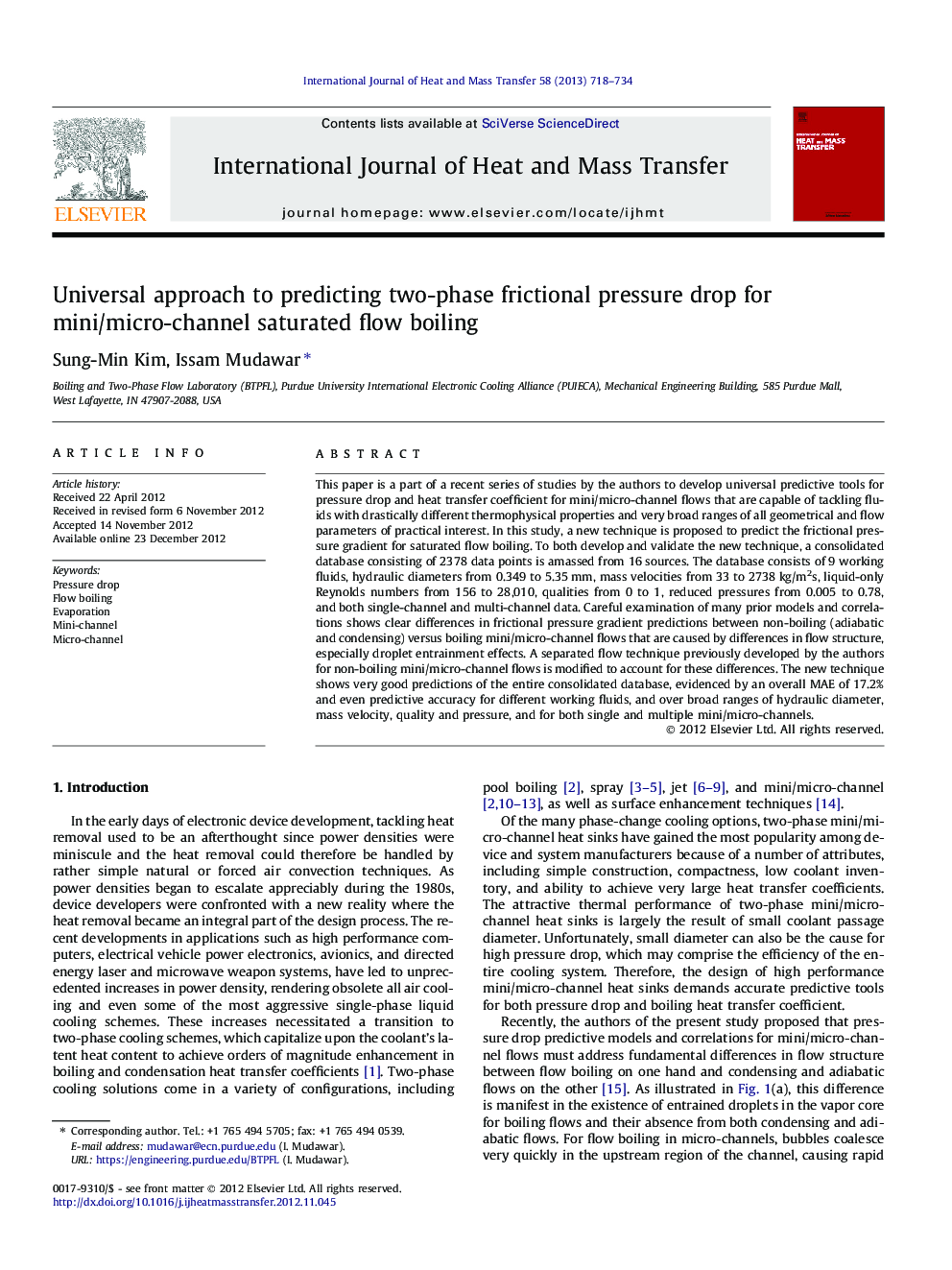| Article ID | Journal | Published Year | Pages | File Type |
|---|---|---|---|---|
| 658481 | International Journal of Heat and Mass Transfer | 2013 | 17 Pages |
Abstract
This paper is a part of a recent series of studies by the authors to develop universal predictive tools for pressure drop and heat transfer coefficient for mini/micro-channel flows that are capable of tackling fluids with drastically different thermophysical properties and very broad ranges of all geometrical and flow parameters of practical interest. In this study, a new technique is proposed to predict the frictional pressure gradient for saturated flow boiling. To both develop and validate the new technique, a consolidated database consisting of 2378 data points is amassed from 16 sources. The database consists of 9 working fluids, hydraulic diameters from 0.349 to 5.35Â mm, mass velocities from 33 to 2738Â kg/m2s, liquid-only Reynolds numbers from 156 to 28,010, qualities from 0 to 1, reduced pressures from 0.005 to 0.78, and both single-channel and multi-channel data. Careful examination of many prior models and correlations shows clear differences in frictional pressure gradient predictions between non-boiling (adiabatic and condensing) versus boiling mini/micro-channel flows that are caused by differences in flow structure, especially droplet entrainment effects. A separated flow technique previously developed by the authors for non-boiling mini/micro-channel flows is modified to account for these differences. The new technique shows very good predictions of the entire consolidated database, evidenced by an overall MAE of 17.2% and even predictive accuracy for different working fluids, and over broad ranges of hydraulic diameter, mass velocity, quality and pressure, and for both single and multiple mini/micro-channels.
Related Topics
Physical Sciences and Engineering
Chemical Engineering
Fluid Flow and Transfer Processes
Authors
Sung-Min Kim, Issam Mudawar,
